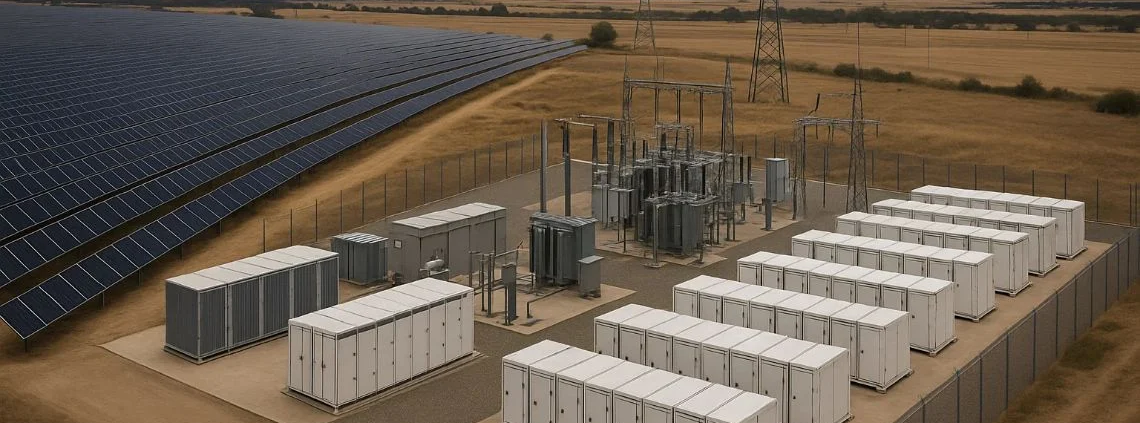Batteries for Utility Backup Power: Technologies, Applications, and Selection Guide
Quick Takeaways
When selecting batteries for utility backup power, today’s market offers lithium-ion batteries (including LFP), advanced lead-acid, flow batteries, sodium-ion, and hybrid energy storage systems.
Most utility backup battery systems today are dominated by lithium-ion technology because of its high energy density, efficiency, and scalability. For long-duration backup, flow batteries and other grid-scale backup power batteries are gaining attention.
1. Why Utilities Need Backup Power
Utilities are the backbone of critical infrastructure. When the grid experiences unexpected outages—due to extreme weather, equipment failure, cyberattacks, or planned maintenance—backup power ensures service continuity.
Applications include:
- Black start capability for grid restoration
- Utility-scale backup batteries for load balancing and emergency supply
- Powering control and monitoring systems
- Maintaining remote or islanded grids
Unlike residential solutions, battery storage for utilities often involves megawatt-hour scale capacity with full SCADA and EMS integration.
2. Main Battery Technologies for Utility Backup Power
2.1 Lithium-Ion Batteries (Li-ion)
- Advantages: High efficiency (90–95%), modular scalability, low maintenance
- Applications: Fast backup, frequency regulation, 2–4-hour utility backup power supply
- Preferred choice for utility energy storage solutions due to thermal stability and long life
2.2 Advanced Lead-Acid Batteries
- Advantages: Low cost, reliable short-term output
- Applications: Substation emergency backup, rural network support
2.3 Flow Batteries
- Advantages: 8+ hours duration, long cycle life
- Applications: Long-duration backup battery storage for utilities, renewable energy integration
2.4 Sodium-Ion Batteries
- Advantages: Good low-temperature performance, reduced lithium dependency
- Applications: Cost-sensitive utility backup projects
2.5 Hybrid Systems
- Combine Li-ion and flow/supercapacitors for both short-term and long-term supply needs
3. Key Selection Factors
When choosing batteries for utility backup power, consider:
- Duration (short, medium, long)
- Environmental adaptability
- Safety & compliance standards
- Integration with utility backup battery systems
- Lifecycle cost & recycling
4. Deployment Models for Utility Backup Power
4.1 Centralized Substation Storage
- Serves an entire distribution area
- Easier maintenance, but potential single point of failure
4.2 Distributed Backup Systems
- Located at critical nodes (communication relays, control centers)
- Higher resilience, flexible modular expansion
4.3 On-Site Generation + Storage
- Paired with gas turbines, diesel generators, or renewables
- Maintains power during prolonged outages
5. Case Study: Liquid-Cooled BESS for Utility Backup
A 5 MWh liquid-cooled LFP BESS deployed at a U.S. substation delivered:
- 5 MW output for fast frequency response
- Multi-hour autonomous operation during transmission line maintenance
- UL 9540 compliance, simplifying permitting
- 15+ years design life with low maintenance needs
6. Future Trends
- Long-duration energy storage (LDES) adoption
- AI-based predictive maintenance for utility-scale backup batteries
- Modular and mobile BESS for flexible deployment
Market Trends Briefing and Recommended Reading
For readers seeking a deeper understanding of the U.S. and global utility-scale battery storage market size, policy drivers, and future opportunities, we recommend the article Utility-Scale Battery Storage in the U.S.: Market Outlook, Drivers, and Opportunities in 2025 and Beyond.
This article focuses on the latest market data and industry analysis and serves as an excellent complement to the technical content presented here.
7. Conclusion
Choosing the right batteries for utility backup power is a balance of performance, compliance, and economics.
While lithium-ion dominates utility backup battery systems, emerging chemistries like sodium-ion and vanadium flow are opening new possibilities for both short- and long-duration grid-scale backup power batteries.


